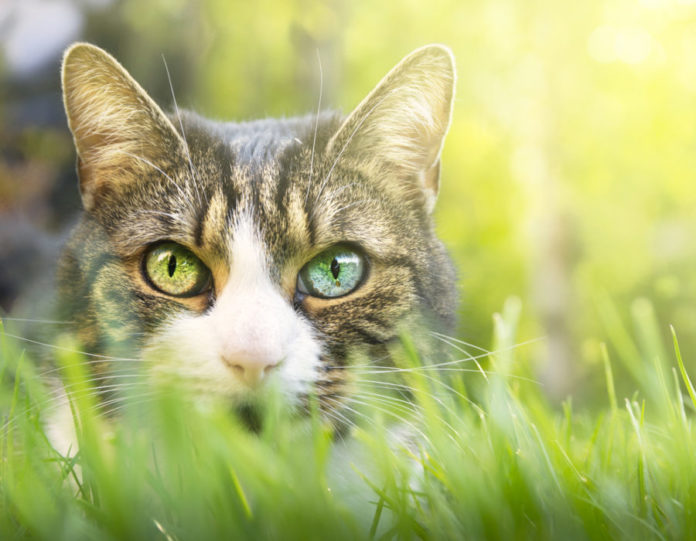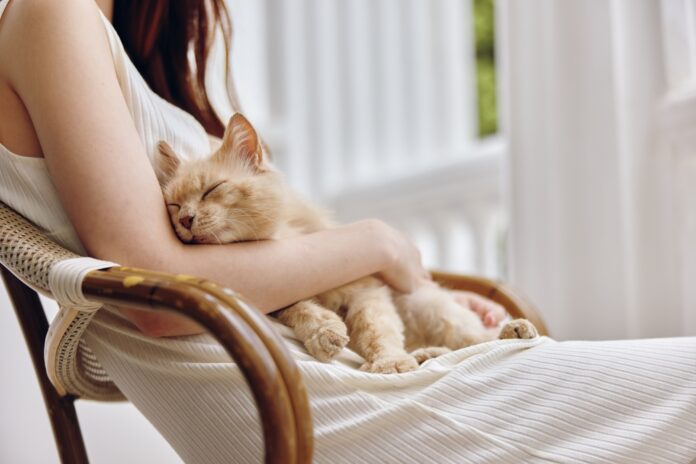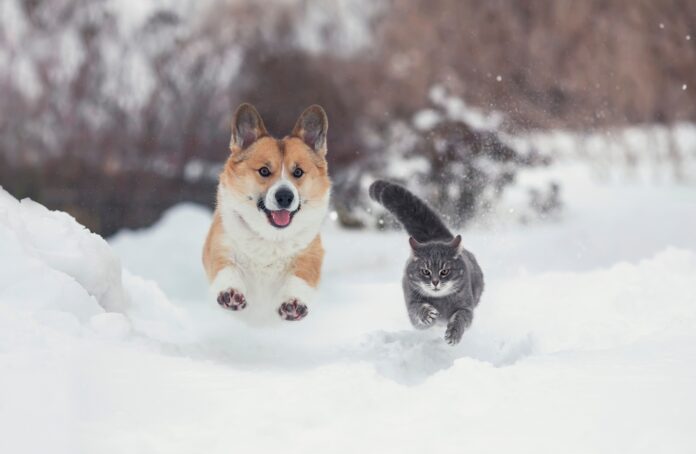How to safely satisfy your cat’s hunting instincts

Safe and humane ways to give your cat the thrill of hunting and catching “prey”, without harming neighborhood wildlife.
As carnivores and predators, cats are natural hunters. Unlike his wild counterparts, your kitty doesn’t need to kill other critters in order to survive, but that hunting instinct is still a strong part of his makeup. How do you satisfy that instinct without letting your cat outside to kill wildlife? Luckily, there are lots of ways to cater to your kitty’s inner hunter without harming songbirds, butterflies and other wild species that are important to our eco-systems.
1. If your cat doesn’t like staying indoors all the time, there are ways to get him outside while keeping local wildlife safe. An outdoor cat enclosure with a fine mesh covering will give him some fresh air and opportunities to watch birds and butterflies without catching and hurting them.
2. Another alternative is to train him to a harness and leash (this is most successful with a kitten or young cat) and take him for “walks”. Be sure to supervise him at all times when he’s outdoors. Never tether a cat to a tree or post and leave him in the yard alone – he could hang himself from his leash, or be at the mercy of a neighborhood dog or other larger carnivore.
3. Situate a bird feeder within easy viewing distance of one of your cat’s favorite windows. This will give him the chance to at least partly satisfy his desire to hunt by watching the birds from indoors (while making that signature “chattering” sound that cats make when they’re stalking!)
4. Some cats enjoy watching birds, fish and other small animals on the TV or computer screen. You can get DVDs, or download apps for your tablet or other mobile device, and let your cat stalk and “chase” the images.
5. Interactive play that allows your cat to chase and catch toys is also important. The key word here is “interactive”. Cats like things that move and soon get bored with objects that just lie there. Feather toys are a particular favorite, as you can use them to mimic bird behavior. The traditional catnip mouse is another good standby — tie it to a string or ribbon and pull it around the house so your cat can chase it. Add challenge and variety to interactive play by going around corners and up and down stairs, or by having the toy “hide” in a box or under a chair.
Be sure to let your cat actually catch the toy from time to time, to give him the satisfaction of a “kill”. Buy quality products, and keep in mind that soft toy surfaces give the cat a chance to sink his claws and teeth into his “prey”.
Be sure to let your cat actually catch the toy from time to time, to give him the satisfaction of a “kill”.
6. When you can’t be around, leave out toys that will encourage self-play. A puzzle toy or interactive feeder with some healthy treats inside will prompt your cat to “hunt” for something to eat.
7. Give your cat access to high places in the house (or his outdoor enclosure). Being up high not only give him a sense of security, but also helps to satisfy his inner hunter by giving him a wide “birds-eye” view of his environment.
8. Cats love knocking things off tables and shelves, not just because they’re trying to get your attention, but also because the objects move rapidly as they fall to the floor. If the object bounces or rolls after it hits the floor, that’s even better; you’ll notice that many cats will jump down after knocking something over to investigate its movement. Again, this activity goes some way to satisfying feline hunting instincts. Rather than discouraging this behavior, keep valuable or breakable items out of reach, and put some of his toys on a shelf or table, so that he can knock those down instead.
Curtail your cat’s wandering
Don’t let your cat roam freely outdoors. Cats don’t discriminate when it comes to what species of wildlife they stalk and kill, so he won’t differentiate between the mice that have set up home in your shed, and the rare thrush nesting in a nearby woods.
In addition, letting your cat wander is dangerous for his own health and well-being – from traffic to infectious disease to larger predators like coyotes or cougars, there are a lot of hazards out there for domestic kitties.
A happy cat is one who has the scope to satisfy some of his natural instincts, and hunting is one of the big ones. Taking steps to appease your kitty’s inner hunter, without harming local wildlife, is easier than you think!




